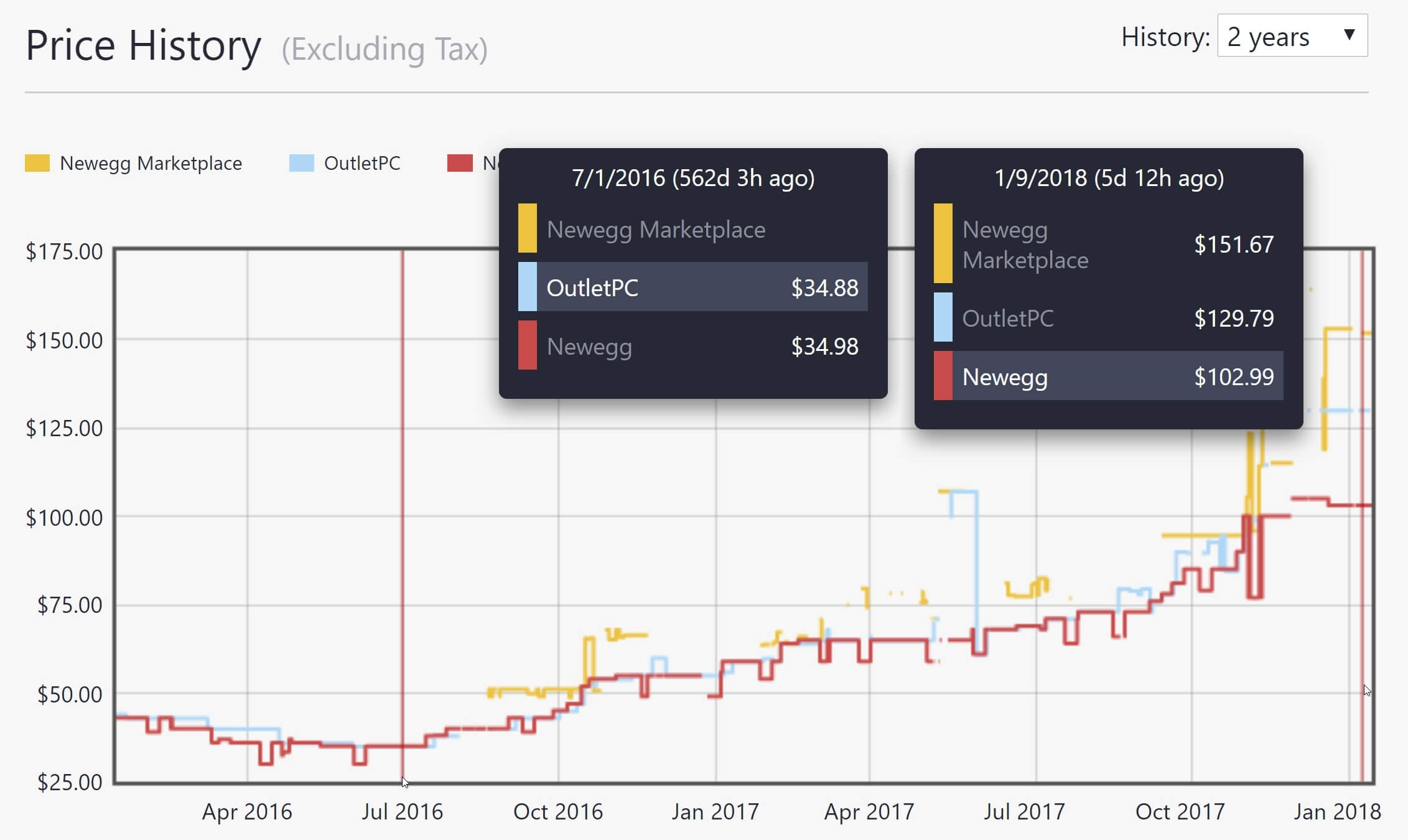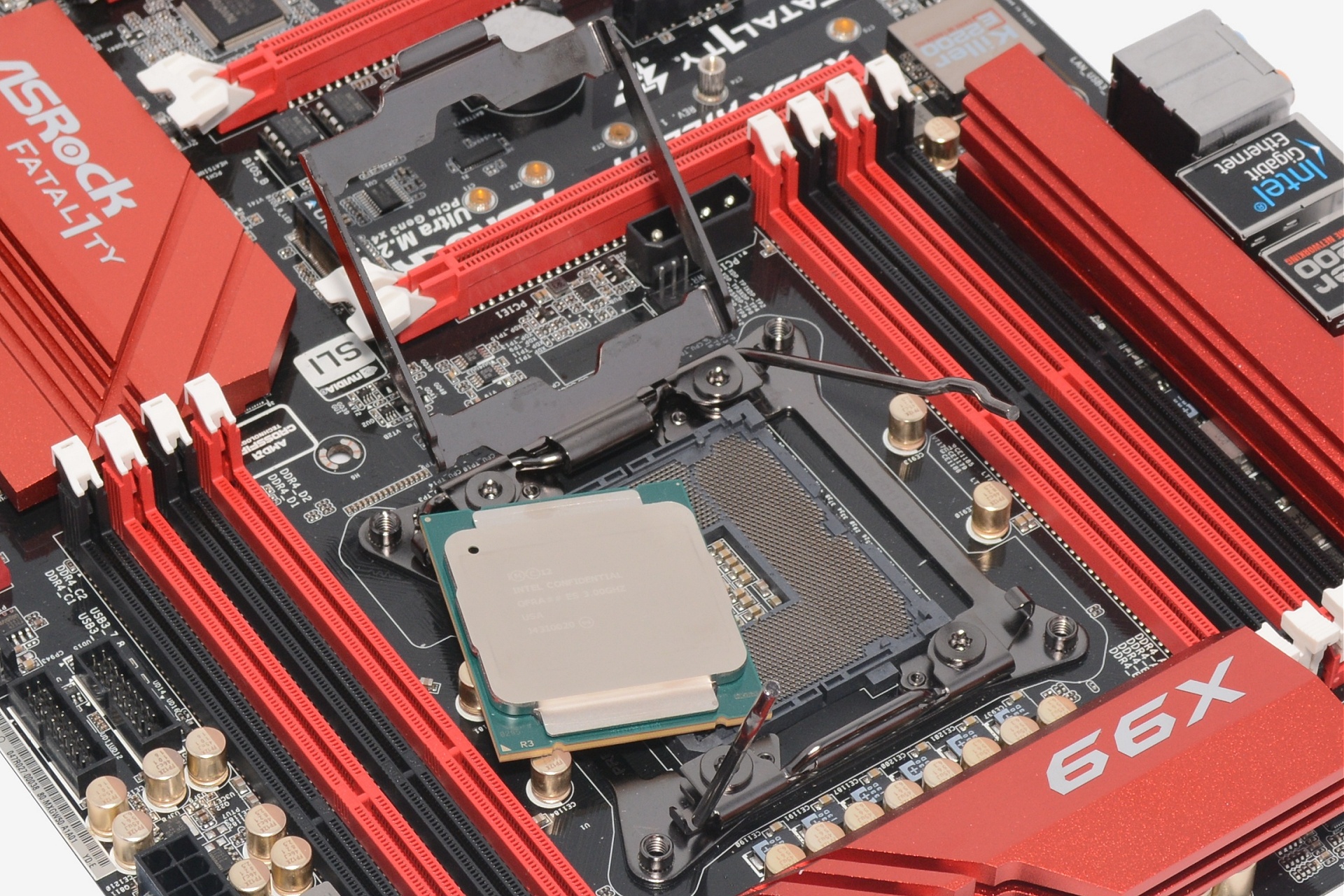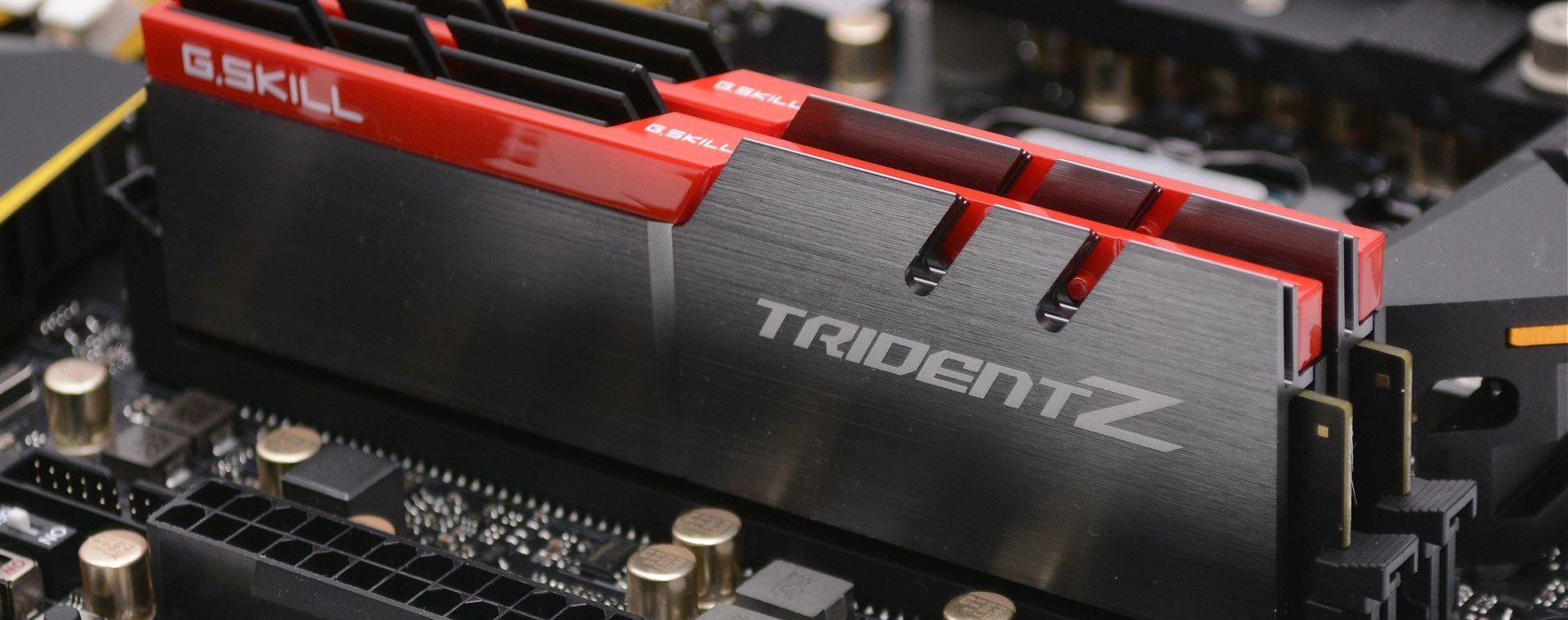The Triple Play episode 5 season 1 - Joe and Mandipast twelve months turned out to be some of the most exciting times we can remember for building a new computer. Last March saw the launch of Ryzen ending half a decade of AMD being 'bulldozed' by the competition. From that point forward it was busy for PC hardware, including the release of new graphics cards and Intel having a second go at things with Coffee Lake after an underwhelming Kaby Lake launch. However, for as much as there was to be excited about regarding computer hardware in 2017, there was plenty to be upset about as well.
Unfortunately, some of these problems have gotten worse and will probably continue to worsen throughout 2018, which is going to make it increasingly difficult to build a PC. Part one of this series will be dedicated discuss DDR4 memory pricing and why it's so high.
RAM pricing is currently a big issue plaguing those wanting to build a new computer or even update an old one. From July 2016 to July 2017, the market saw a 111% increase for the average selling price of DDR4 memory, and it has continued to increase since then.

An 8GB DDR4-2400 memory kit went for around $35 in 2016. A year later you could expect to pay a little over $70 for the same product. Today you're looking at an asking price of at least $90, or 170% more than what we were paying roughly 18 months ago.
But why is this? First and foremost, it's an issue of supply and demand. And while it's difficult to predict exactly when supply will improve, most reports suggest this won't happen until late 2018 when manufacturing of 64-layer and 96-layer 3D NAND flash reaches maturity. Until then, demand will continue to heavily outweight supply.
So, okay, it's a supply issue – but why? What's the main driver behind either supply decreasing or demand increasing? I believe we've been faced with a sort of double whammy.
The major DRAM suppliers shifted focus away from DDR4 production due to tight margins, investing elsewhere, while growth in the traditional desktop sector over previous years was slow and nobody wanted to pay a premium for DDR4 products, resulting in a loss of interest from manufacturers who couldn't meet their planned targets and returns.

With limited demand in late 2014 with Intel's Haswell-E and Haswell-EP range which continued in 2015 with Skylake and then again 2016 with Broadwell-E, the limited supply wasn't an issue. However, in 2017 we saw a rapid shift in market demand toward desktop computing, not just Intel but now also AMD were shipping processors supporting DDR4 memory.
Perhaps an even bigger factor, the smartphone industry has increased demand of not just DRAM but NAND as well. It's worth highlighting that it's a different type of DDR4 memory which is produced for the mobile market (Low Powered DDR4 or LP DDR4), and manufacturers such as Samsung make more profit selling LPDDR4 memory in premium smartphones.
With demand outweighing supply, prices increased and DDR4 margins were no longer tight. By mid-2017, pricing of memory modules soared significantly and unfortunately it doesn't look like manufacturers will be ramping up production any time soon.
According to market research firm DRAMeXchange, the three major DDR4 suppliers (Samsung, SK Hynix and Micron) slowed down their capacity expansions and technology migrations to maintain prices in 2018 at the same levels seen in the second half of last year, which is presumably related to their interest in sustaining strong profit margins.
The construction of new fabs is underway to help the strained supply but they won't be ready for mass production until 2019 at the earliest. It's predicted by Gartner that DDR4 pricing will crash in 2019 and history would suggest this is likely to happen as that's the cycle we go through every few years with memory pricing.
China has the potential to change things here with its aggressive approach to the semiconductor market, which could cause pricing to become even more unpredictable. Chinese memory could flood markets worldwide causing pricing to plummet. Right now there is a large number of Chinese fabs being built and it is expected that the country will take second place for investment in semiconductors this year as it equips the many new fabs that began construction in 2016 and 2017.

It's also been reported that China's National Development and Reform Commission is investigating the possibility of DRAM price-fixing between the major industry players, and this has of course been sparked by the price surge we've been talking about. If found guilty, it's hard to predict what the ramifications would or could be, so we'll have to see how that story plays out. It would appear as though they do have quite a bit of power here, as SK Hynix and Samsung both have a number of facilities in China.
So if you have a choice: hold off on building your new PC until later in 2018 (or longer) or simply accept the hit on memory pricing. PC gamers will ideally want 16GB these days and those kits cost at least $170, with premium memory priced closer to $200. Granted, the same kit would have costed around $75 in the good old days, but try not to dwell on that.
Inflated DDR4 memory pricing is only one of the problems you can expect to face when looking to upgrade or build a PC in 2018, and in the next part of this series we're going to discuss what's going on with GPU pricing and what we can expect later this year.
2017 was an exciting year for PC hardware but it wasn't all roses. The warning signs we saw are painting more difficult in 2018. In this 3-part series we discuss why building a new gaming PC is not a great idea at the moment, or at the very least, it's going to come at great expense.
 Today's Hurdle hints and answers for April 1, 2025
Today's Hurdle hints and answers for April 1, 2025
 Diner live tweets hellish date and oh boy it's entertaining
Diner live tweets hellish date and oh boy it's entertaining
 iPhone camera might get AR features, report says
iPhone camera might get AR features, report says
 Can filthy VR headsets give you herpes? We have answers.
Can filthy VR headsets give you herpes? We have answers.
 NYT mini crossword answers for May 12, 2025
NYT mini crossword answers for May 12, 2025
 World's largest LEGO store joins London's Leicester Square attractions
World's largest LEGO store joins London's Leicester Square attractions
 No, Apple isn't spying on your iPhone call history
No, Apple isn't spying on your iPhone call history
 At least 3 NBA teams are reportedly boycotting Trump hotels
At least 3 NBA teams are reportedly boycotting Trump hotels
 Google Pixel Buds Pro 2: $40 off at Amazon
Google Pixel Buds Pro 2: $40 off at Amazon
 Grandma invites wrong teen to Thanksgiving, now every teen wants to come
Grandma invites wrong teen to Thanksgiving, now every teen wants to come
 Divergent 3D's Dagger super bike shows off 3D printing possibilities
Divergent 3D's Dagger super bike shows off 3D printing possibilities
 Some other dude named Mike Pence is owning his @mikepence Twitter handle
Some other dude named Mike Pence is owning his @mikepence Twitter handle
 'Peep Show' fans, rejoice: Mitchell and Webb have a new comedy
'Peep Show' fans, rejoice: Mitchell and Webb have a new comedy
 Trump delays TikTok ban for another 75 days
Trump delays TikTok ban for another 75 days
 Kate Upton is really pissed her fiancé didn't win the Cy Young Award
Kate Upton is really pissed her fiancé didn't win the Cy Young Award
 This is what it looks like to create a bonfire out of 5,000 guns
This is what it looks like to create a bonfire out of 5,000 guns
 Even faster charging tech will juice phones from 0 to 50% in 15 minutes
Even faster charging tech will juice phones from 0 to 50% in 15 minutes
 Amazon Fire TV Stick 4K deal: Get 40% off
Amazon Fire TV Stick 4K deal: Get 40% off
 The internet is puzzled over how to rescue these doomed plates
The internet is puzzled over how to rescue these doomed plates
Reddit plays nice and delivers lovely photos to newly'Friends' star Marcel the monkey is set to be a TV star againHere's what Obama plans to do after he leaves the White HouseVerizon, AT&T, TWoman burns 'It' clown doll after it floats into her backyardMore delivery robots head to college campuses to bring you lateCybersecurity conference attendees possibly exposed to IRL virusDon't let your precious Apple Card touch lesser credit cards, warns AppleDwayne 'The Rock' Johnson named Forbes' highest paid actor of 2019Facebook wants to hire journalists, but where does that leave News Feed?Sean Spicer lied again: He's doing 'Dancing with the Stars' after allTwitter and Facebook suspend accounts linked to Chinese government'Sad Dogs Outside Shops' Facebook page is a mustMoviePass left customers' credit card numbers exposed on unprotected serverEven a Republican study can't confirm antiApple Card has its own Twitter accountFlaw let hackers spy on—and even alter—data sent via Bluetooth'Angry Women' display powerful protest art during Trump's inauguration weekTony Stark and the rebirth of the cool heroTony Stark and the rebirth of the cool hero China announces a 'game Mariah Carey's lip synching was 2016's last victim People are accusing Kylie Jenner of Photoshopping her butt to sell jeans It took 100 years and 1 inspirational video for new NYC subway line to launch Serena Williams engaged to Reddit co These are the top 16 movies of 2016 No, California has not legalized child prostitution Consumer Reports stands by its verdict, won't recommend Apple's MacBook Pro 8 ways you can be a kinder human in 2017 Produce worker admiring his work gets the Photoshop battle he deserves What we do and don't know about Russia's interference in the presidential election Watch the moment SpaceX Starship crushed a major milestone in latest test 7 ways online dating became more advanced in 2016 A galaxy from 11 billion years ago just reappeared in a shocking way Tech for New Year's resolutions to stay fit and healthy Congratulations, internet: The Mannequin Challenge finally made it to space Here are 8 of the best theater shows of 2016 The heartbreaking story behind Dwayne 'The Rock' Johnson's gift to his dad Why 2016 was the year of time travel Beijing welcomed 2017 from beneath a blanket of smog
2.4887s , 10137.578125 kb
Copyright © 2025 Powered by 【Triple Play episode 5 season 1 - Joe and Mandi】,Miracle Information Network